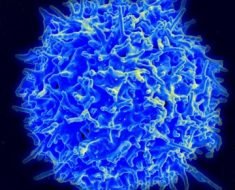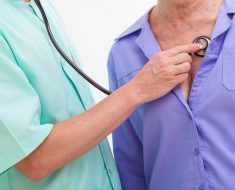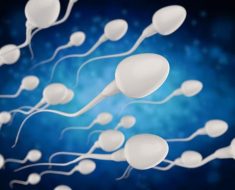MADRID — Although only 1 in 10 thyroid nodules are malignant, these nodules are so frequent among the general population (between 30% and 50%) that they often lead to consultation. Ultrasound is the technique currently used for the examination and diagnosis of thyroid nodules, but the imminent incorporation of artificial intelligence and computer-assisted diagnostic systems may provide greater precision and optimize diagnosis.
This was the premise that Jordi Reverter, MD, an endocrinologist at the Germans Trias i Pujol University Hospital of Badalona, in Barcelona, Spain, presented during the 63rd Congress of the Spanish Society of Endocrinology and Nutrition.
Among the advantages that this technology offers, Reverter highlighted the possibility of learning from the data it provides and using the knowledge acquired to complete tasks and achieve specific objectives. In addition, the technology is flexible and can be continuously adapted to the information that is obtained. “The analysis of radiological test images is one of the most developed fields in this regard,” he said.
Regarding the role of these systems in thyroid nodule diagnosis, Reverter commented that ultrasound is currently the test of choice for examining thyroid gland nodules. Tumors that need to be assessed through puncture cytology are selected on the basis of their size, characteristics, and risk classification.
“However, ultrasound has a subjective component. For the same image of a nodule, there may be discrepancies in criteria between specialists, and therefore it still depends on the experience of the observer. And it’s in this aspect where artificial intelligence can be of great help, reducing subjectivity and improving diagnostic performance, which in turn would translate into shorter examination time, a reduction in the number of cytologies, and avoiding unnecessary punctures,” he added.
Experimental Systems
Reverter explained that the operation of computer-aided diagnostics in the diagnosis of thyroid nodular disease is carried out through four basic steps: image acquisition; segmentation; identification and analysis of the characteristics of the nodule; and automatic classification.
“Image acquisition is very important and depends on the experience of the observer and the quality of the equipment. Using a series of algorithms, these programs try to refine the image before processing it. Segmentation makes it possible to determine which part of the image is going to be analyzed, detecting the region of interest and extracting the nodule to be analyzed from it,” said Reverter.
“The identification and analysis of the characteristics of the nodule is done through two types of algorithms: some based on nonconvolutional methodologies (non-CNN), and those based on convolutional systems (CNN), which are the most advanced and offer a risk scale or an analysis of the type (whether the nodule is benign or malignant) as a result,” Reverter added. “Finally, the automatic classification is done in two ways: distinguishing malignant nodules from benign nodules and, based on size, offering a recommendation (cytology, follow-up, or doing nothing).”
Reverter explained that all these systems are experimental and that the field is in full expansion. “The results obtained by the different work groups have shown great diagnostic capacity. Specifically, they have yielded good results in terms of sensitivity and (to a lesser extent) in relation to specificity.
“These systems have a really important diagnostic power, and a curious fact in this regard is that the programs based on convolutional intelligence, which in theory would be the most advanced, showed less power than non-CNN systems. A possible explanation for this would be that these are programs that have been developed later and probably need more time to carry out the necessary adjustments. It has also been seen that their diagnostic capacity is very similar to that of expert observers.”
Challenges in Application
Three of these systems have already received marketing authorization from the US Food and Drug Administration and the European Medicines Agency. Reverter analyzed the main characteristics of each of them and noted, “Data are available, but further studies and validation on them are still lacking. The challenge now is their clinical application, for which a series of key points must be taken into account: diagnostic accuracy, ease of use, price, and speed.
“Our group from the Endocrinology and Nutrition Department of the Germans Trias i Pujol University Hospital has been able to carry out the first validation in Europe in clinical practice of the first available commercial computer-assisted diagnostic program. From its results, it can be deduced that it is a system that achieves a diagnostic performance that does not reach the level of an expert professional but can improve that of less experienced observers, and its application allows them to be more effective,” added Reverter.
Regarding where to implement computer-assisted diagnostics in the diagnostic procedure, Reverter noted that for experienced observers, the contribution of this technology may be somewhat limited, as it does not provide a noticeable improvement in accuracy, “but in settings where experience is limited or resources are few (eg, primary care), these programs can improve diagnosis. In the case of expert centers, they could be used as a double check or second opinion.
“The key is to establish where to incorporate these systems in the diagnostic process, and keep in mind that if they are used as a screening tool, it’s important to know how to interpret the results of the program, for which technical staff are required to safely filter the aspects that should be addressed at a specialized level or that require cytological examination.”
Reverter noted that data support these systems as a useful tool for learning and training. “A research challenge is to understand the underlying reasons for the predictions that the algorithm makes. Likewise, one of the points of improvement of this artificial intelligence applied to the diagnosis of thyroid nodular disease is that it only analyzes nodules and not cervical structures, but it is to be hoped that the development and improvement of the algorithms will make it possible to expand the usefulness and reliability of these systems.”
Thyroid Ophthalmopathy
Another aspect within the thyroid field that was addressed during the congress was thyroid ophthalmopathy. According to the experts, thyroid ophthalmopathy is the main extrathyroid manifestation of Graves’ disease. Great scientific advances have been made in this field in recent years. Greater knowledge of pathophysiology has allowed the discovery of new treatments and better training of endocrinologists and ophthalmologists. These improvements allow increasingly earlier and individualized diagnosis and treatment.
Marco Sales, MD, PhD, an ophthalmologist specializing in oculoplastics and orbit, who is section head at the Ramón y Cajal Hospital in Madrid, commented that approximately one third of patients with Graves’ disease have thyroid ophthalmopathy. This problem can also affect patients with autoimmune thyroiditis and, sometimes, people without known thyroid alteration.
Regarding risk factors, Sales highlighted the evidence on the role of tobacco and radioactive iodine used in the treatment of Graves’ disease. “It is very important that patients do not smoke, and they should also avoid radioactive iodine in case there are risk factors for developing an orbitopathy after it. These factors are fundamentally smoking, very high levels of thyroid-stimulating hormone receptor antibodies, or very uncontrolled hyperthyroidism.”
Regarding the newer treatment options for this disease, in the active or inflammatory phase (in which corticosteroids are currently the therapy of choice), Sales highlighted the role of biological drugs. “In the inactive phase, the only option is surgery, which provides very good results. The therapeutic prospects for the future point to the development of new molecules that effectively treat inflammation in the active phase and improve the sequelae in the inactive phase,” he said.
Carmen Montañez, MD, endocrinologist in charge of joint thyroid orbitopathy consultation at the San Carlos Clinical Hospital in Madrid, discussed the main advances in the clinical and diagnostic assessment of thyroid orbitopathy. This inflammatory disease, which is possibly autoimmune in origin, is usually associated with metabolic disorders of the thyroid gland. “This is a problem that negatively affects the patient’s quality of life, even generating social isolation due to the physical changes it produces. Hence the importance of the endocrinologist being familiar with the signs and symptoms to be able to refer affected patients early to specialized units.”
Montañez highlighted the importance of close collaboration between the endocrinologist and the ophthalmologist in the treatment of these patients within a multidisciplinary approach. She alluded to the consensus among the different specialties, published in 2016 by the European Group On Graves’ Orbitopathy and of which a revised edition was published in 2021.
The diagnosis is fundamentally clinical, Montañez added. Diagnosis is supported by biochemical (measurement of thyroid hormones and antithyroid-stimulating hormone receptor antibodies) and radiologic (axial CT and MRI) tests. “In the clinical assessment of these patients, it is essential to measure inflammatory activity and severity to establish treatment.”
Regarding the management of this pathology, the specialist stated, “Although not all the factors that intervene in the development of thyroid orbitopathy can be modified, it is important to know those in which it is possible to intervene to avoid the worsening of hyperthyroid patients with ophthalmological involvement.”
Reverter, Sales, and Montañez have disclosed no relevant financial relationships.
Follow Carla Nieto of Medscape Spanish Edition on Twitter @carlanmartinez and on LinkedIn.
This article was translated from the Medscape Spanish edition.
Source: Read Full Article





